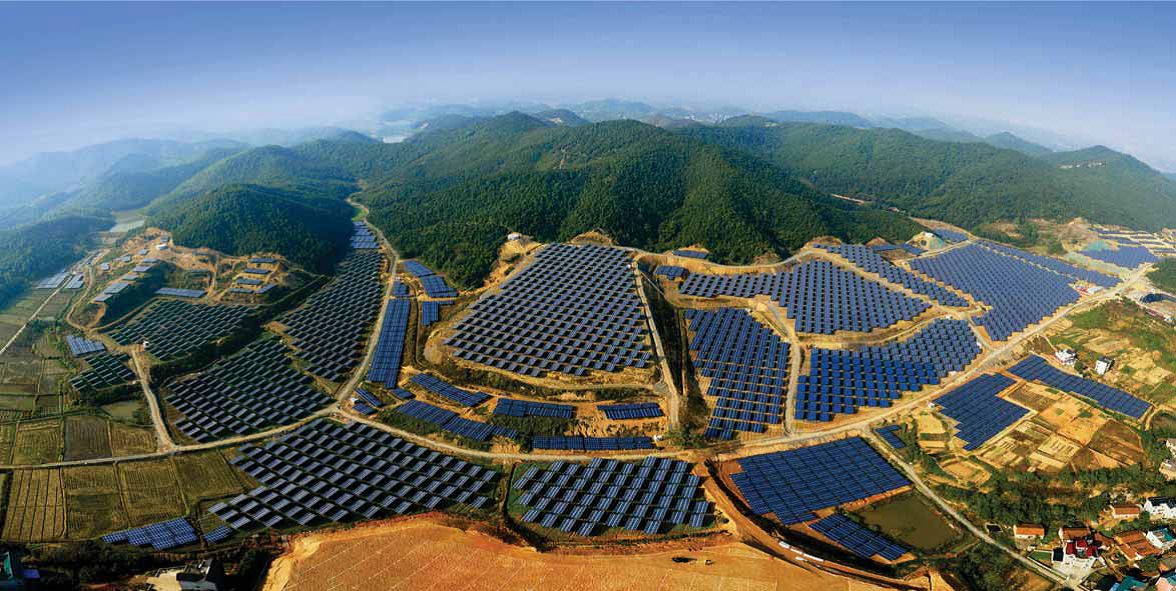China surpassed all expectations in 2017 to install a record amount of solar PV. While final figures are yet to emerge, it appears likely the country will top 54 GW of new installs.
As in 2017, predictions are that this year will also experience installation rushes as feed-in tariff (FIT) deadlines loom, on June 30 and December 30.
According to EnergyTrend, under China’s “Build Plan” – the annual plan for FIT projects – a maximum of 7.2 GW of PV will be installed before June 30 (the so-called 630 deadline), as developers look to avoid the new, lower 2018 FIT rates if their plants are not operational by this date.
A total of 14.4 GW of capacity has been approved, says EnergyTrend, however, as 7.2 GW of this has been allocated under China’s poverty alleviation program – where FIT rates remain unchanged – this rush should not top 7.2 GW.
The Taiwanese analysts say, however, that according to the National Development and Reform Commission (NDRC), “from 2019 there will be no half-a-year grace period for PV power projects, meaning the installation rush for the sake of more generous subsidies of the previous year, as the expected 630 rush, will no longer exist.”
Overall, solar demand in the first half of the year is expected to be strong, particularly for ground mounted projects, which will also receive a boost from China’s Top Runner Program – an annual auction based tender program for projects using high efficiency modules and advanced technologies – where grid connection of some second-batch projects has been postponed to this quarter.
Looking ahead, up to 20 GW is expected to be installed in the run up to the December 30 FIT deadline. Despite this, construction for projects under the country’s 2018 build plan – 12.9 GW according to the National Energy Administration – are expected to decline in H2 2018.
“EnergyTrend believes that half of the amount will be converted to use for poverty-alleviation ground-mounted projects, which will have to be completed for grid connection by the end of the year,” write the analysts. Distributed demand should remain strong, they add.
China’s government has set a solar PV target of 105 GW by 2020. According to the Asia Europe Clean Energy Consultants (AECEA), however, the country’s total PV capacity is already sitting at around 120 GW. Bloomberg New Energy Finance (BNEF) puts total capacity at around 94 GW, and notes that this amount has been achieved “despite uncertainty on how … subsidy payments will be collected, and delays in payment.”
In the latest edition of IHS Markit’s PV Demand Market Tracker, China has now become the priority market for domestic manufacturers, something likely to shape the market this year.
“Short supply and higher than anticipated module prices in the first half of 2018 will impede many markets outside China, due to worsening project economics,” said Edurne Zoco, Research and Analysis Director at IHS Markit in mid-December.
Overall, IHS Markit estimates that up to 108 GW of solar PV will be installed in 2018, with China accounting for almost half this figure.
In its 4Q 2017 Global PV Market Outlook, BNEF highlighted the difficulties in assessing the future of PV in China, given the fact new installations are generally driven by investor confidence that subsidies will be paid, rather than actual policies; and because certain sectors have unlimited quotas, such as rooftop installations.
“China's 2018 is still full of uncertainty, even after the NEA has released 86.5 GW quota for ground mounted utility-scale projects for 2017-20 in August. Of this quota, 22.4 GW was allocated in 2017, and most of this should achieve grid-connection in 2018,” write the report’s authors.
They add, “The 22.4 GW of 2017 quota contains 8 GW for Top-runner, about 7.4 GW for developer-owned (utility-scale) PV for Poverty Alleviation, and about 7 GW for regular utility projects. It is likely that about 5 GW of this quota will be given to already grid-connected projects, leaving about 17 GW for new installation in 2018.”
Overall, BNEF has outlined three scenarios for China’s 2018 PV market: (i) conservative with under 35 GW of installs; (ii) central with around 43 GW; and (iii) highest at almost 60 GW.
This content is protected by copyright and may not be reused. If you want to cooperate with us and would like to reuse some of our content, please contact: editors@pv-magazine.com.




Those predictions are as hilarious as every year. We will see >70GW. There never has been any slow down. Production capacity has increased, prices have fallen.
I agree with Axel, its really strange why the Chinese PV Solar manufacturing effects are continually seen with an overall negative perspective byu so many…rest assured, China will continue to confound the commentators talking about a slow down…..
I’m certainly not Chinese myself, but you have to be continually astounded by their forward thinking approach to the whole solar market..including their own internal unsatiable demand for panels. The latest P R of China Govt tendering process which assures that PV panels are made to the highest quality for the best price even for internal consumption, is a master stroke..and we outside of China also now benefit from this approach. More than 80% of the worlds’s PV product comes out of China now.